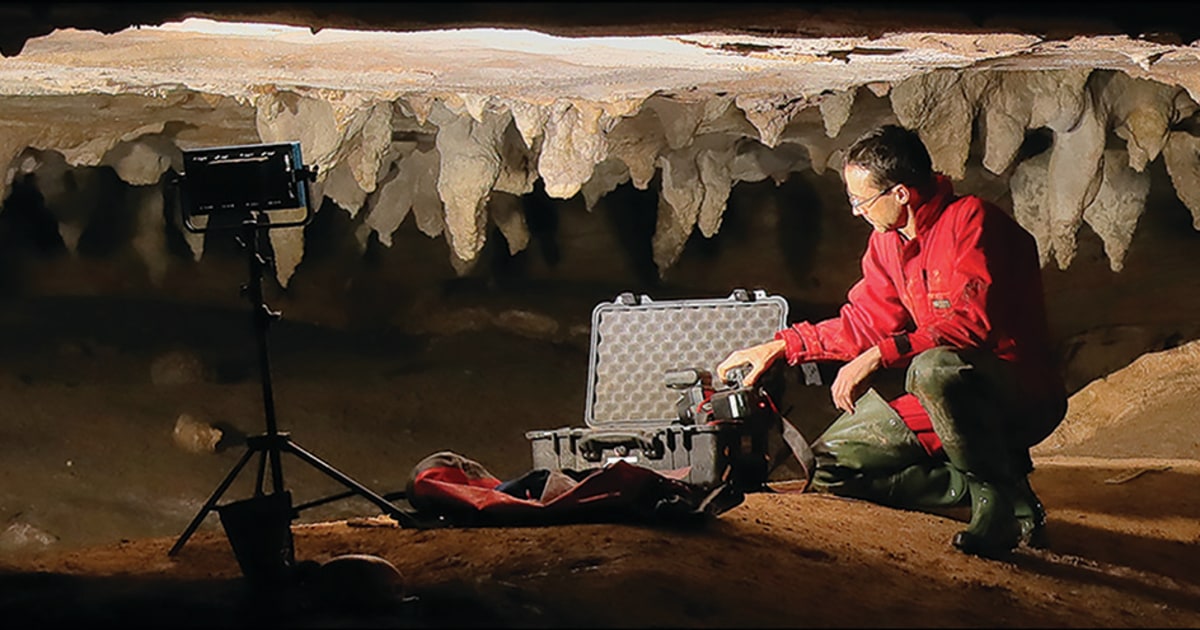
“They are either people dressed in regalia to look like spirits, or they are spirits,” said archaeologist Jan Simek, a professor of anthropology at the University of Tennessee in Knoxville.
And if they were people dressed as spirits, they were for a time considered the spirits themselves.
“The term we like to use is that they were ‘materializing’ those spirits through the costumes that they wore,” he said.
Simek is the lead author of a research paper on the carvings published Tuesday in the journal Antiquity. It describes five of the largest figures found on the cave ceiling by a photographic study that originally aimed to record the cave’s carvings in case they became damaged or invisible.
Four of the figures seem to be people wearing regalia, while the fifth is a coiled snake, possibly a diamondback rattlesnake.
The cave in the northern Alabama countryside (the researchers are keeping its precise location a secret) is the richest prehistoric cave art site in North America, Simek said.
It’s one of thousands of caves within the southern part of the Appalachian Plateau, a huge region of “karst” — heavily eroded limestone — that runs from southern Pennsylvania to Alabama.
Known to science only as the “19th Unnamed Cave,” it extends for miles beneath the surface. Hundreds of carved figures are incised into the ceiling of the “dark zone” filled with stalactites and stalagmites just beyond the light from the entrance.
The team estimates the carvings were made about 1,000 years ago by people who lived during the late Woodland phase of the Native American culture in the region.
Simek said the cave carvings were unlike those found above the ground in the region, which usually depicted other subjects in different styles, often in red paint.
Caves were regarded in many Native American traditions as entrances to an underworld, and the distinctive style of the cave art seemed to reflect this, he said.
Although the entrance to the cave is large, the distance between the floor and the ceiling quickly narrows to between three or four feet in the dark zone, and it would have been similar when the carvings were made, he said.
That means the Native American artists could not have seen the entirety of the figures as they were carving them.
The artists probably burned clusters of reeds to give them light, and ancient deposits of reeds are now found throughout the cave, he said.
The carvings were cut into the mud veneer of the cave’s ceiling, possibly with a stone tool, and the process of accumulating layers of mud on the surface has continued since they were made.
Source: | This article originally belongs to Nbcnews.com









